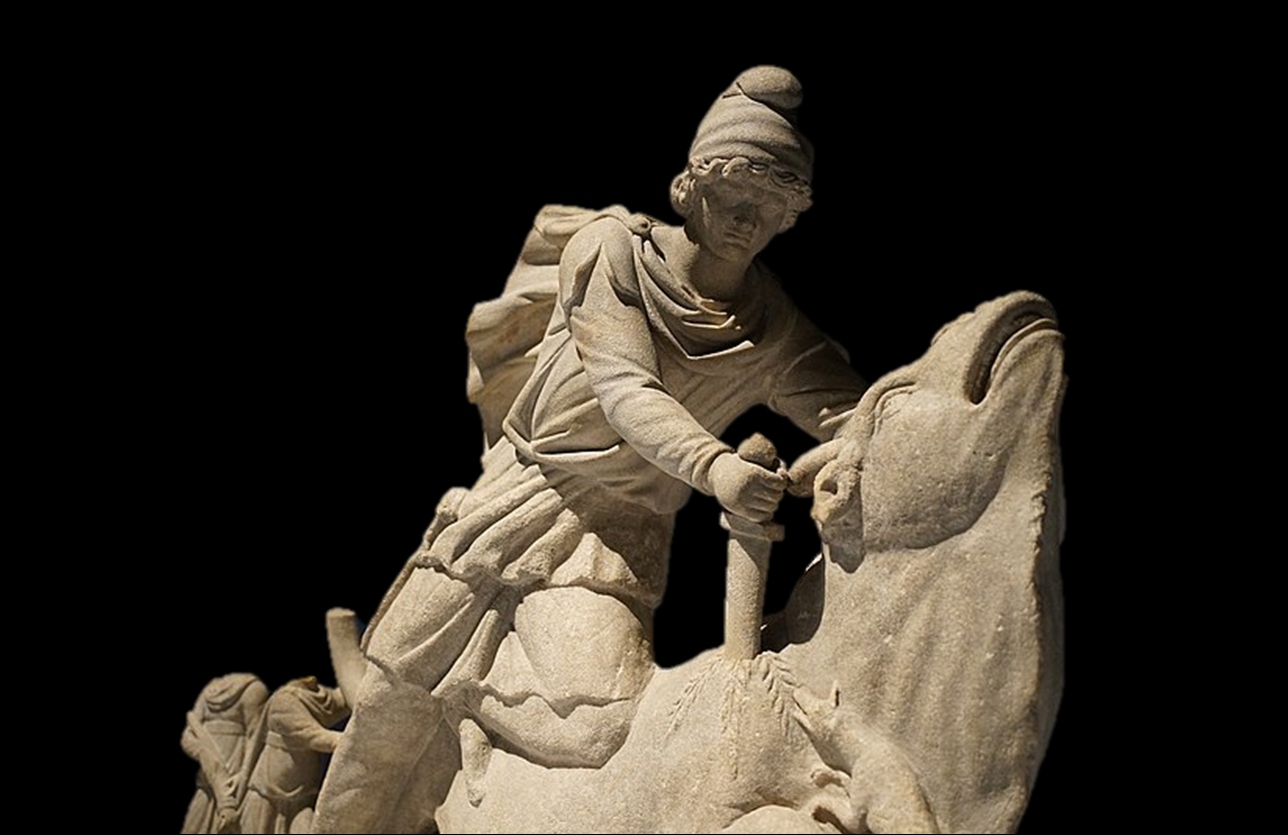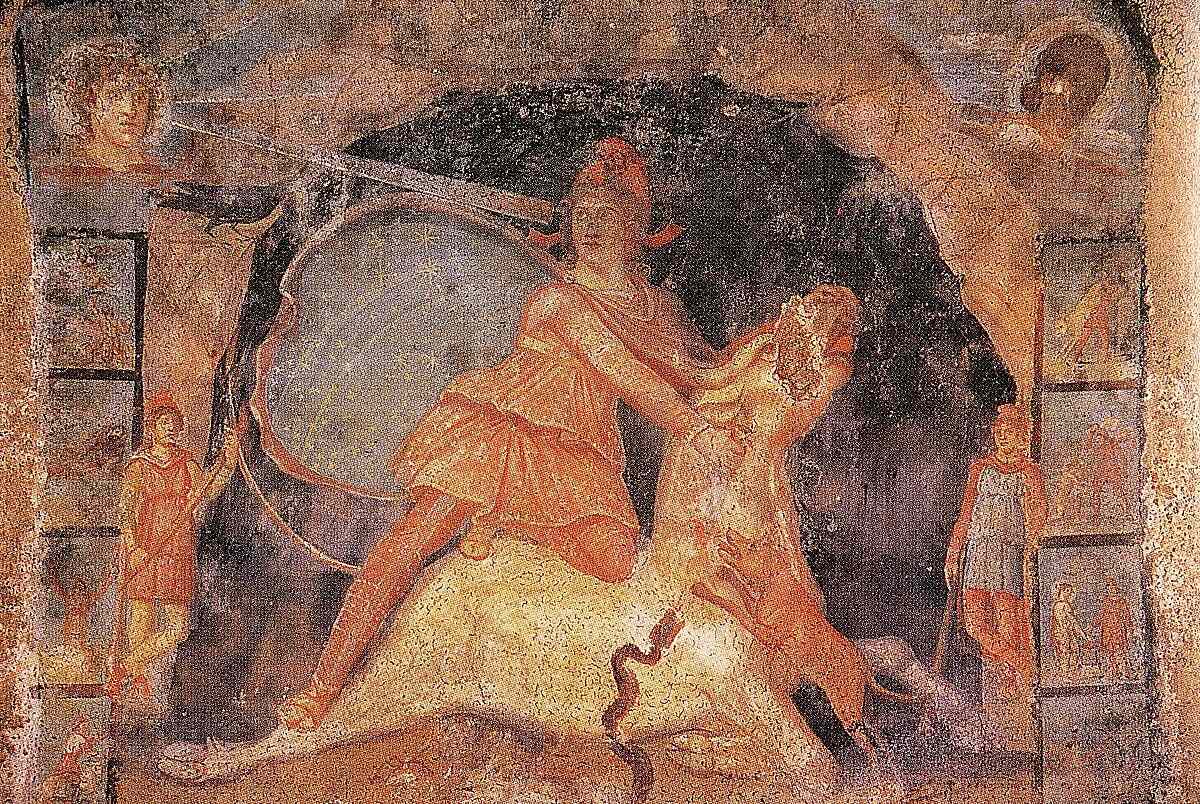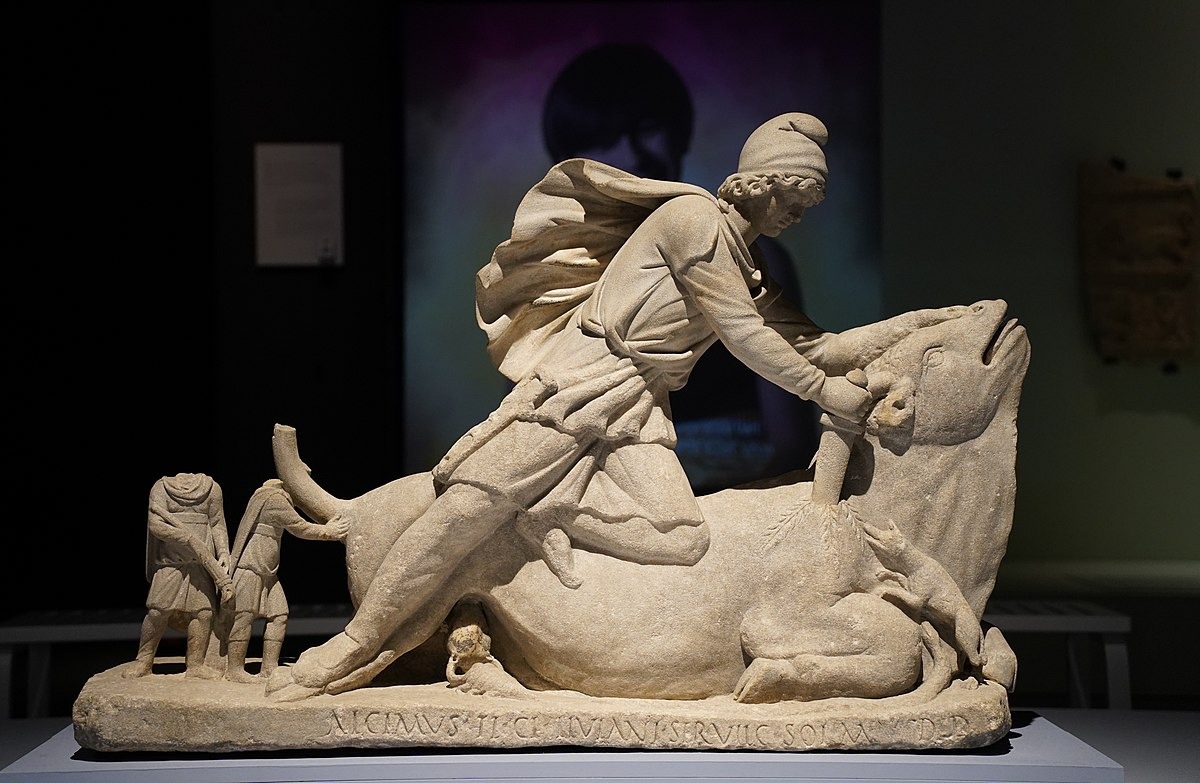
Mirthraism was an ancient Roman religion whose popularity grew at the same time as Christianity. Known also as the Mithraic Mysteries or the Cult of Mithras, this religion was centered on the worship of the deity, Mithras.
The Mithraic Mysteries became popular among the Imperial Roman army from about the 1st to the 4th century AD at the same time that Christianity gradually spread across the empire. The ascendency of Christianity by the late 4th century AD contributed to the decline of Mithraism.
The beliefs and religious practices associated with Mithraism are not entirely clear and continue to be a matter of debate among historians. The religion may have been inspired by the Zoroastrian worship of Mithra (yazata) in Persia, but the extent of this connection is continually contended and debated. Unfortunately, no primary literary sources relating to the religion have survived, so historians have attempted to reconstruct Mithraic mythology by examining visual sources like sculptures and frescoes.

Mithraism
Much like numerous other faiths of its time, the cult operated in secrecy. Devotees paid homage to Mithras within temples known as Mithraea, frequently constructed within caves and concealed from the general populace. However, the clandestine nature of the cult was tolerated by authorities, particularly Roman emperors due to its favorable stance toward imperial authority. Over two hundred temples dedicated to Mithras have been unearthed, spanning from Syria to the UK, with the majority of discoveries concentrated in Italy, along the Rhine, and the Danube regions.
Historians believe that the core tenet of the Mithraic Mysteries’ mythology revolved around Mithras’ slaying of a bull, an event commonly referred to as the “tauroctony.” This act was believed to give rise to new life from the bull’s demise, an animal often symbolizing strength and fertility. The concept of rebirth may have been of paramount significance in the narrative of the Mithraic Mysteries. Members of the cult may have believed that the ritualistic sacrifice of the bull established a novel cosmic order and was intricately linked to the moon, a celestial body associated with fertility as well.

The ritualistic slaying of the bull was typically portrayed on a stone relief, a prominent fixture within almost every temple dedicated to Mithras. On the reliefs, Mithras frequently appears subduing the bull and killing it. As a deity of Persian origin, Mithras adorns what the Romans perceived as distinctive Persian clothing, the Phrygian cap and trousers, and attire foreign to Roman fashion norms. Approximately 650 of these stone reliefs have been discovered, and their remarkable resemblance is consistent across the board.
The bull sacrifice relief was commonly positioned towards the rear of the temple. It was designed in a manner reminiscent of an elongated Roman dining room featuring a central aisle bordered by two spacious elevated benches. Nonetheless, the ritualistic act of sacrificing the bull was infrequently carried out by worshipers themselves. Adherents emulated Mithras’ action of sharing the bull’s meat with Sol, a deity associated with the sun. This is evidenced by fragments of utensils and remains of animals unearthed within these sanctuaries. Lavish cultic banquets involving high-quality pork, chicken, and a substantial quantity of wine were consumed, fostering a lively communal bond among worshipers and their connection to Mithras.

Clash with Christianity
In his work, The Origins of Christianity, Ernest Renan advanced the notion that Mithraism emerged as the primary rival to Christianity from the 2nd to 4th centuries AD. It has indeed been suggested that Emperors Commodus (180-92 CE) and Diocletian (284-305 AD) lent their support to the Mithraic cause. However, some scholars contend that these assertions are questionable, given the scant evidence indicating the official recognition of Mithraic worship as a sanctioned Roman cult.
Since both religions began to gain popularity at roughly the same time, it is reasonable to suggest that they would have competed for followers. In any case, Mithraism and its adherents encountered oppression during the 4th century due to the process of Christianization in the Roman Empire. As a result, Mithraism eventually faded away, with its decline occurring at some point between the 4th and 5th centuries.
Emperor Constantine’s Edict of Milan, issued in 313 AD, marked a turning point in the competition between monotheistic Christianity and the more traditional polytheistic pagan faiths of the Roman Empire that would also have impacted the staying power of Mithraism. Christianity supplanted other faiths as the official religion of the Roman Empire in 380 AD, and in 392 AD, Emperor Theodosius began to clamp down on pagan religions. Historian L.H. Martin asserts that Roman Mithraism reached its conclusion as a result of these anti-pagan edicts issued by Theodosius in the final years of the 4th century.
See all the latest news from Greece and the world at Greekreporter.com. Contact our newsroom to report an update or send your story, photos and videos. Follow GR on Google News and subscribe here to our daily email!



